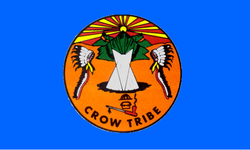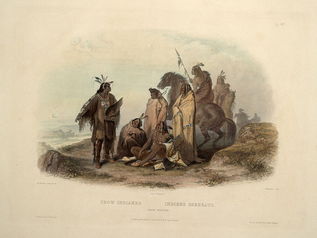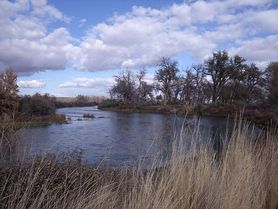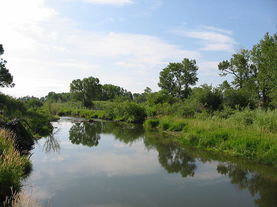 Crow Nation Flag
Crow Nation Flag The Crow Indians were more isolated and independent than any of the other tribes that call Montana home today. They were constantly pushed from areas further east, and they even did the pushing themselves when they found an area they liked. That area was Montana, and they’ve been living in the state for more than 400 years.
Pushed West
 Karl Bodner Painting, c. 1840 to 1843
Karl Bodner Painting, c. 1840 to 1843 Things weren’t much better there, however, and the Crow soon found themselves being pushed west again, this time by the Cheyenne. Things settled down for a time before both groups were then pushed west by the Sioux, who by that time were settling into the Black Hills of South Dakota as well as the Big Horn Mountains of Montana. The only thing to do was keep moving.
Only about 500 people traveled west, but the land they chose in eastern Montana and northern Wyoming served them well, and there numbers swelled to about 8,000 by the time the smallpox epidemic hit around 1850.
Seizing Control
 Bighorn River
Bighorn River The Crow’s area came to encompass much of the area south and east of what is now Billings, and their territory covered a huge area of south-central Montana, including the Judith, Tongue, Big Horn, and Wind Rivers. The mountain ranges that their area encompassed included the Bighorn, Pryor, and Wolf Mountains, as well as the Absaroka Range.
When they had the area secure and just the way they liked it, they no longer needed to stay together, so they split apart into three groups: the Mountain Crow, the River Crow, and the Kicked in the Bellies. They increasingly adopted the nomadic lifestyle so common among the Plains Indians, and their hunting skills increased substantially.
Way of Life
 Musselshell River by Selkirk
Musselshell River by Selkirk The Crown never befriended any of the tribes that pushed them west, although they did eventually ally with the white settlers, even becoming scouts for the US Army. The other tribes in the area didn’t like the Crows, and often allied together to fight them.

